Hiking the Hajikami-toge Pass on the Historic Kumano Kodo Pilgrimage Trails
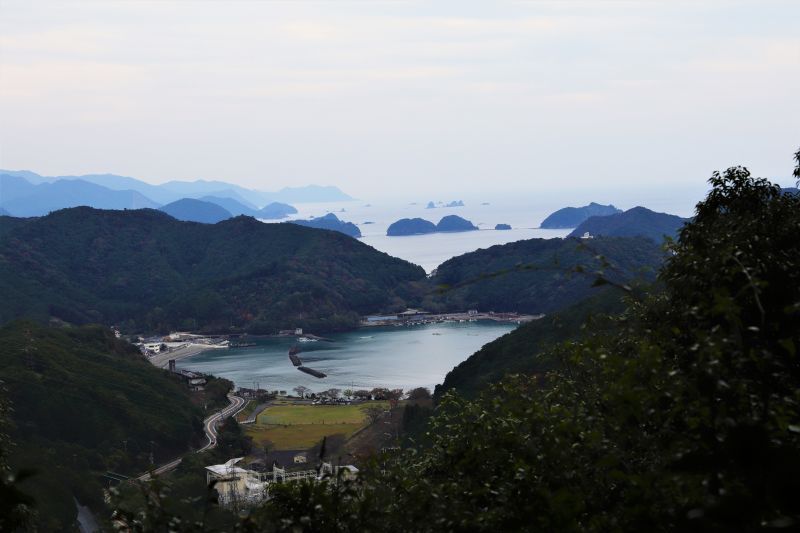
The Kumano kodo is an extensive network of pilgrimage trails that has been in use for over 1,000 years and visitors can experience a special combination of nature and tradition on these routes. It is one of only two pilgrimage routes in the world that are designated as UNESCO World Heritage Sites. The Hajikami-toge Pass offers hikers a choice of two routes, Edo and Meiji, which meet at the pass. From the top of the pass, visitors can enjoy panoramic views of the Kumano Sea.
About the Author:
I believe travel is an opportunity to feed your soul and I will never stop exploring our amazing planet. Originally from Canada, I now live in Osaka with my family and have learned that Japan is an incredible place for discovering new experiences.
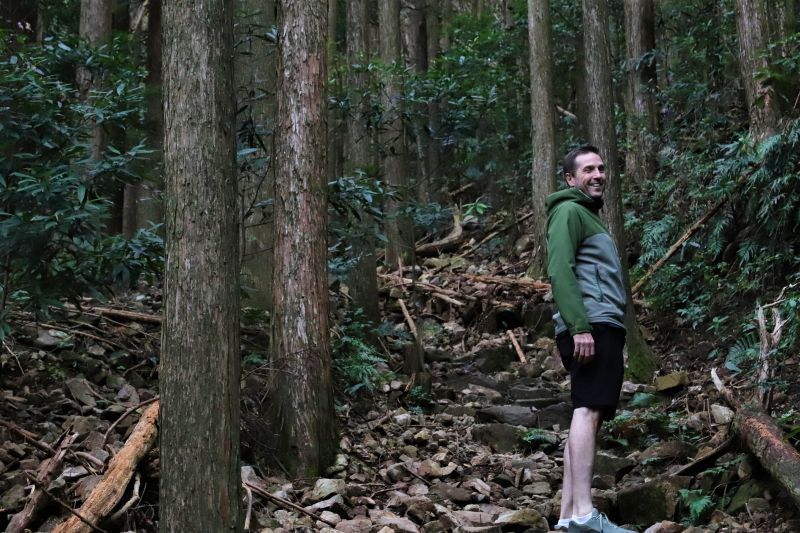
One of my favorite activities is hiking in the mountains and there is no better hiking experience in Japan than exploring the incredible trails of the Kumano kodo in Mie Prefecture. The ancient pilgrimage trails never disappoint and there is an amazing range of trail difficulty and terrain to choose from. The monuments and sites that can be found along the Kumano kodo pilgrimage routes also reflect the fusion of Shintoism and Buddhism in Japanese history, which was a major point of development for East Asian culture.
I had hiked a few sections of the Kumano kodo in the past and I was looking for a mid-level hike of about two hours when I found out about the Hajikami-toge Pass located between Taiki Town and Owase City. It is a 3.5 km hike that has two routes to choose from for the ascent to the pass. I chose to take the Edo route since it was considered to be a little more challenging than the Meiji route.
When I arrived at the Hatsudensho-mae bus stop, I was greeted by an amazing view of the Kumano Sea and a lovely little beach where some kayakers were loading their gear onto a trailer after being out on the calm waters. The road to the trailhead started from a parking lot with restrooms and vending machines where visitors can grab a drink before the hike.
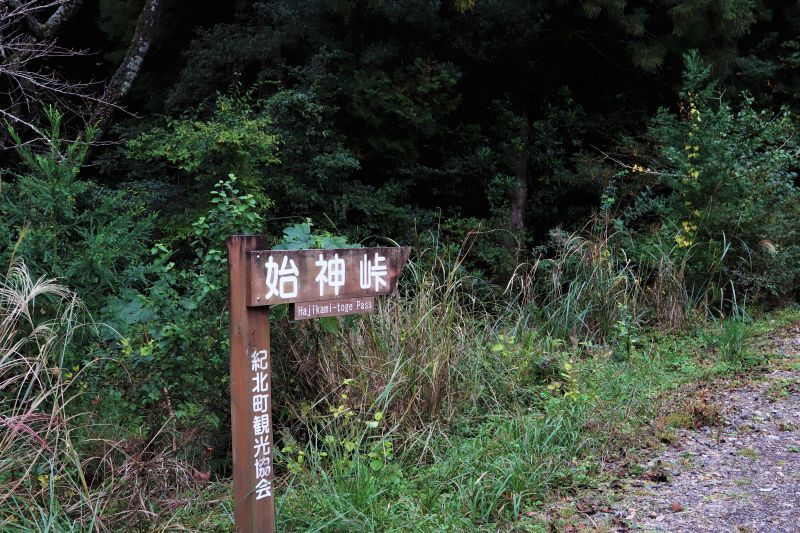
Caption: This signpost pointed the way to the trailhead.
I passed the Hajikami Sakura-hiroba canal as I made my way along the road to the trailhead. It was a perfect day for a hike with a partially cloudy sky and a comfortable temperature. As I walked down the road, the mountain was to my left and it was covered in thick green ferns and tall thin trees shooting straight up out of the ground.
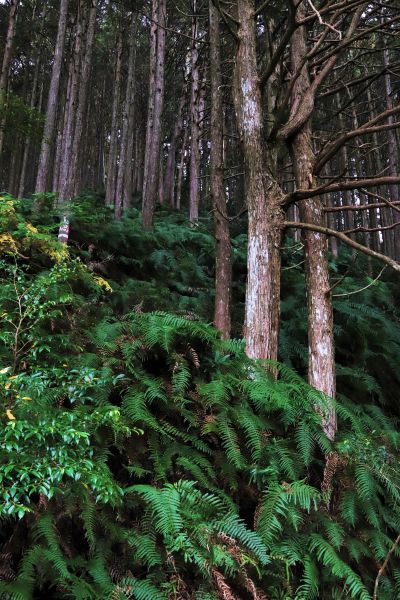
Caption: The forest was dense and lush with ferns and trees.
At the trailhead, there was a marker post and a small bridge crossing over a mountain stream. From there, it was into the woods and onto the Edo route. There was a nice wooden sign just before the trail started to angle up the mountain and from there I entered the calm and soothing atmosphere of the Kumano kodo.
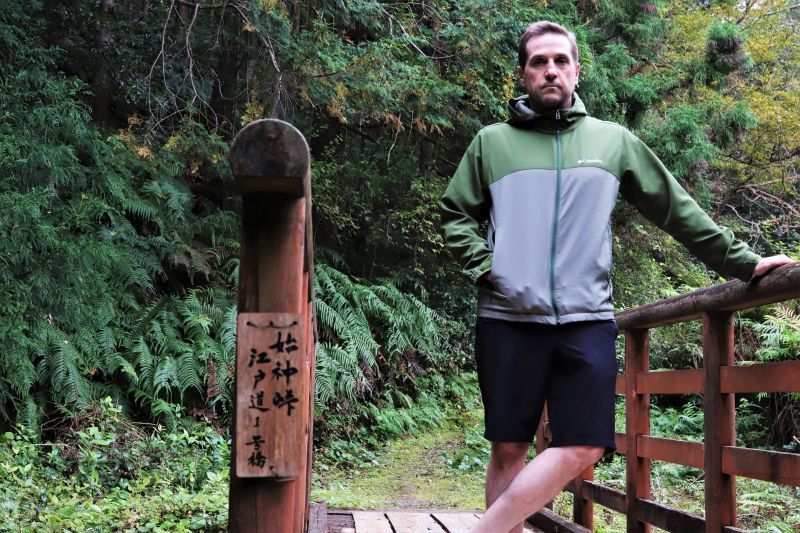
Caption: There was a nice little bridge at the trailhead.
I always love the feeling of entering a mountain forest, as the air gets thick with the sounds and smells of nature. On the day of my hike, there weren’t many other hikers on the trail and I basically had the trail to myself. The start of the trail was quite flat and I was enjoying the solitude of being surrounded by the tall trees all around me.
I soon came to a long footbridge that crossed over a dry riverbed. It was well worn and sturdy. As I crossed the bridge, I welcomed the feeling of leaving the modern world behind and just focusing on the trail ahead of me as I wound my way through the woods. It didn't take long for the pitch of the trail to increase and the trail began to feature steps of flat stones and tangled tree roots.
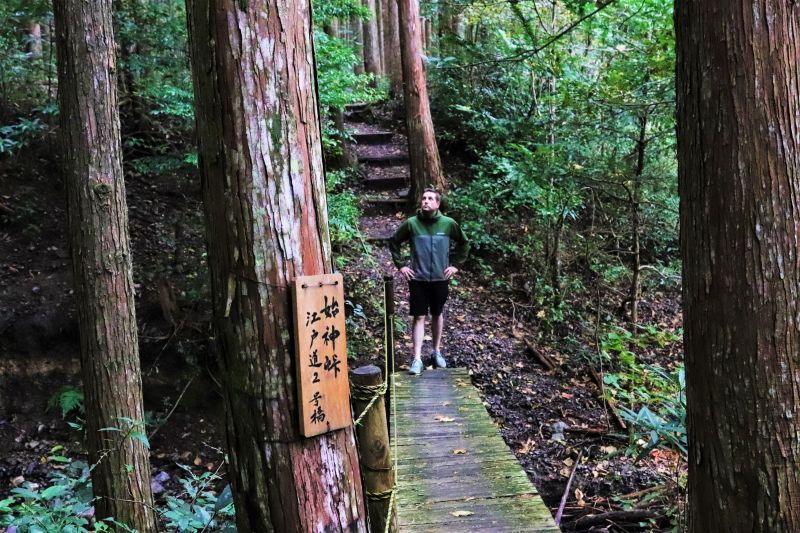
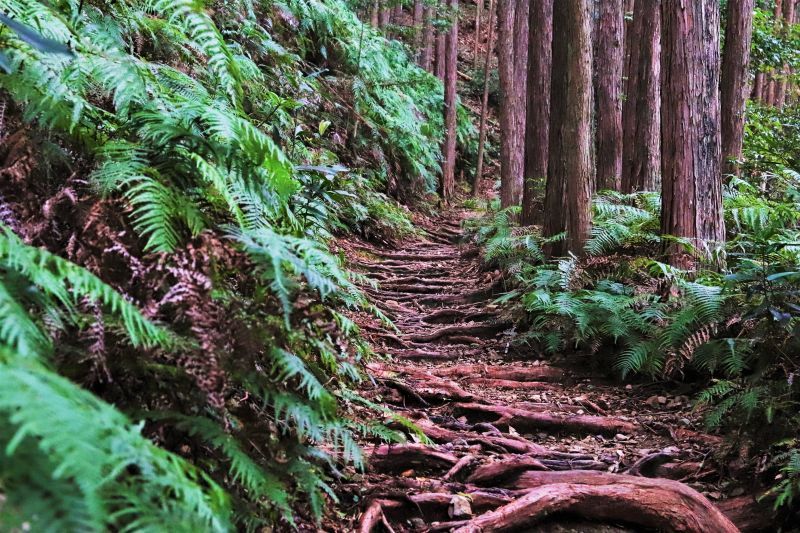
Caption: Much of the Edo route had natural steps formed by tree roots.
When I reached the steepest section of the trail, the stones and roots gave way to larger steps that had been reinforced with boards and stakes. I could start to feel the burn in my legs as I made my way up the steep winding path. The last half of the Edo route had some good pitch and when I reached the pass, it felt good to be on a flat section again.
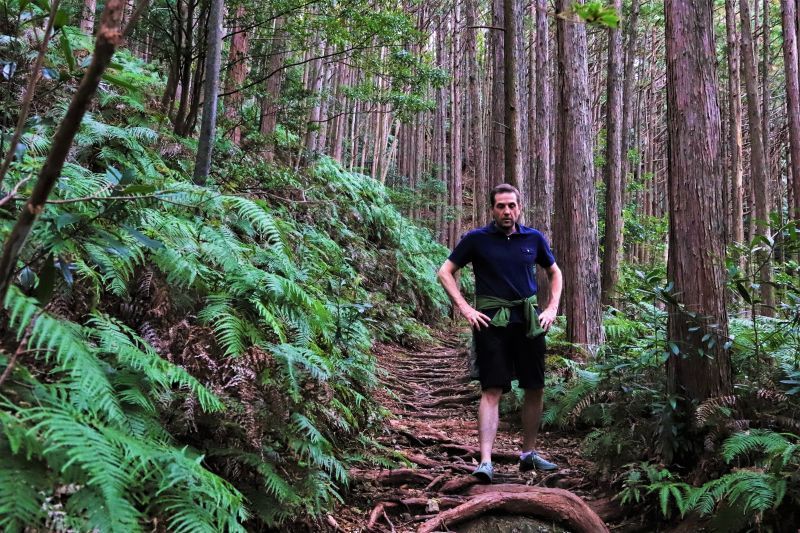
Caption: The second half of the Edo route was took some effort.
At the top of the pass, there is a good-sized viewing area and three solid benches to take a rest on and enjoy the amazing view. There are also some large stones that I learned were part of the foundation of a teahouse that was used by traveling worshippers from the Edo Period to the Meiji Period. As I sat and enjoyed some cold tea, I appreciated the fact that I was looking at the same view that was enjoyed by Japanese pilgrims hundreds of years ago.
I could see my starting point by the water and the beautiful Mie coastline stretching into the distance along the Pacific Ocean. After a nice break at the top of the pass, I was ready to head back down the mountain to complete my hike of Hajikami-toge Pass.
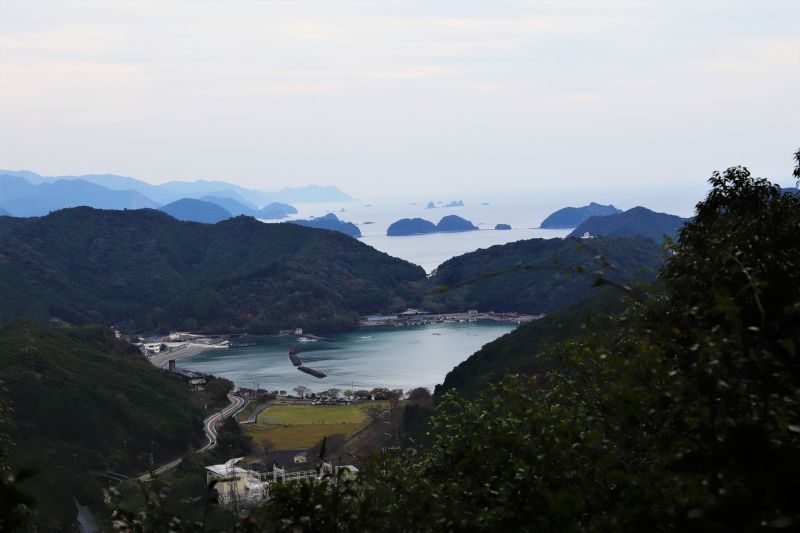
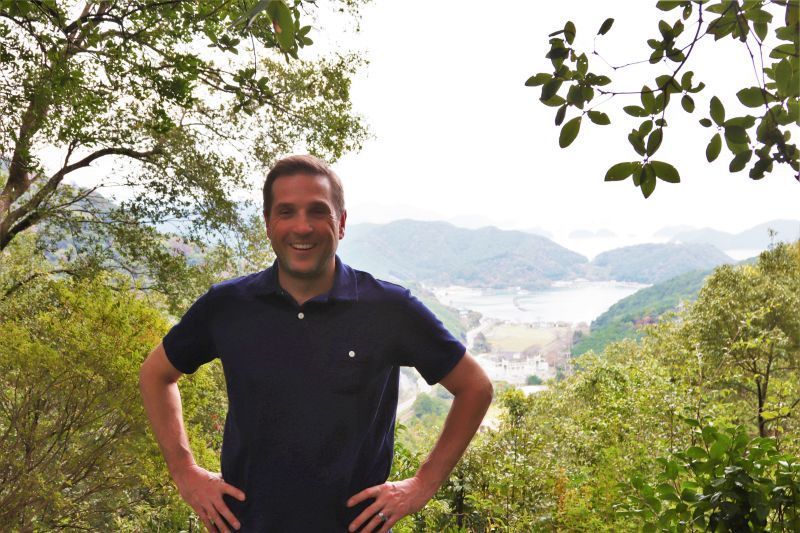
Caption: The view was a great reward for my efforts on the trail.
I decided to take the Meiji route on my descent and it was great. I really enjoyed the hike down on the less steep trail and I was able to take my time and appreciate the quiet forest as I strolled along. One of the common features of many Kumano kodo trails is the stacked stone walls built into some corners to reinforce the path. I came across a couple of these amazing feats of ancient engineering on the way down.
This area is one of the wettest in Japan and I was amazed by the superb condition of the hiking trail. Even with modern knowledge and tools, it must be difficult to maintain a trail that is so deep in the forest. The fact that the trail has been kept in such wonderful condition for over 1,000 years is a testament to the dedication and hard work of people who respect the value and importance of the Kumano kodo trails.
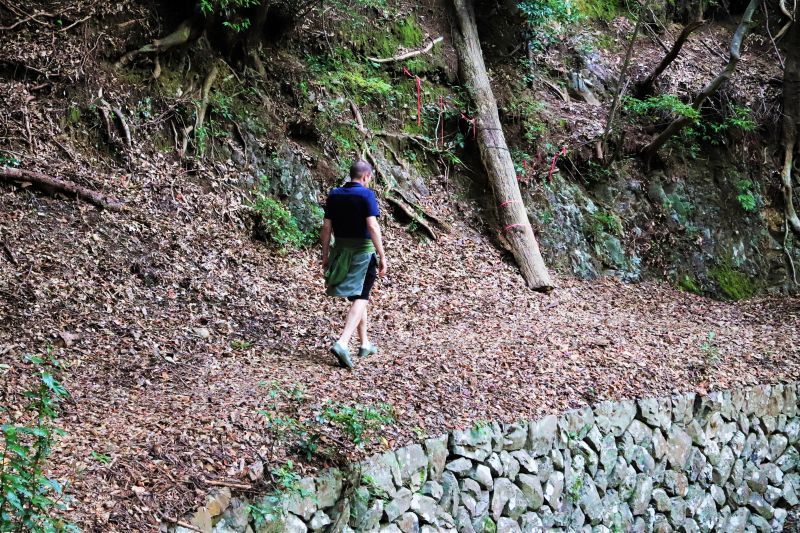
Caption: Taking the Meiji route down allowed me some time for reflection.
The path on the Meiji route was wide and there were some great spots to stop and look out into the forest. The sun had come out for the second half of my hike and I was also glad to have some tree cover to protect me from the heat. I took my time on the way down and my total hike time was around an hour and forty-five minutes when I reached the trailhead.
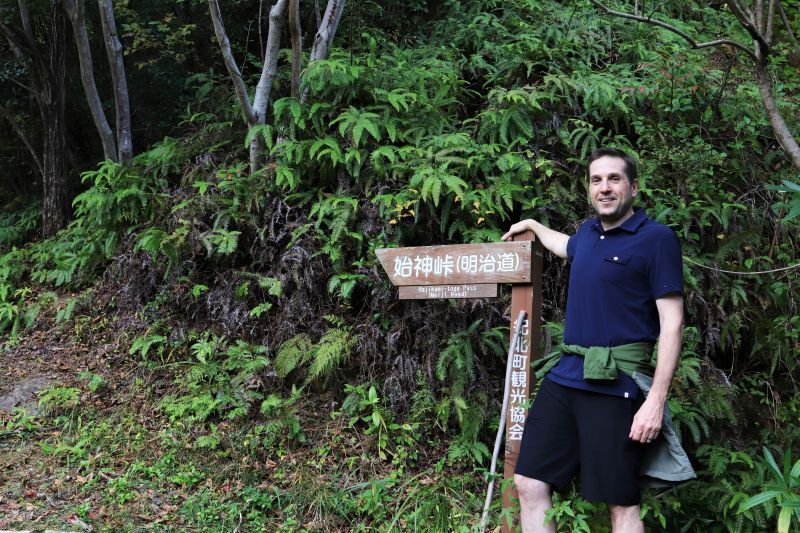
Caption: Back at sea level after a great hike over the Hajikami-toge Pass.
For anyone who enjoys hiking, the Hajikami-toge Pass is a great option. It is easy to access by public transportation and the two different routes provide trekking options for all levels of hikers. At around two hours, it is a great half-day experience that can be paired up with another activity in the area to make a full day of it.